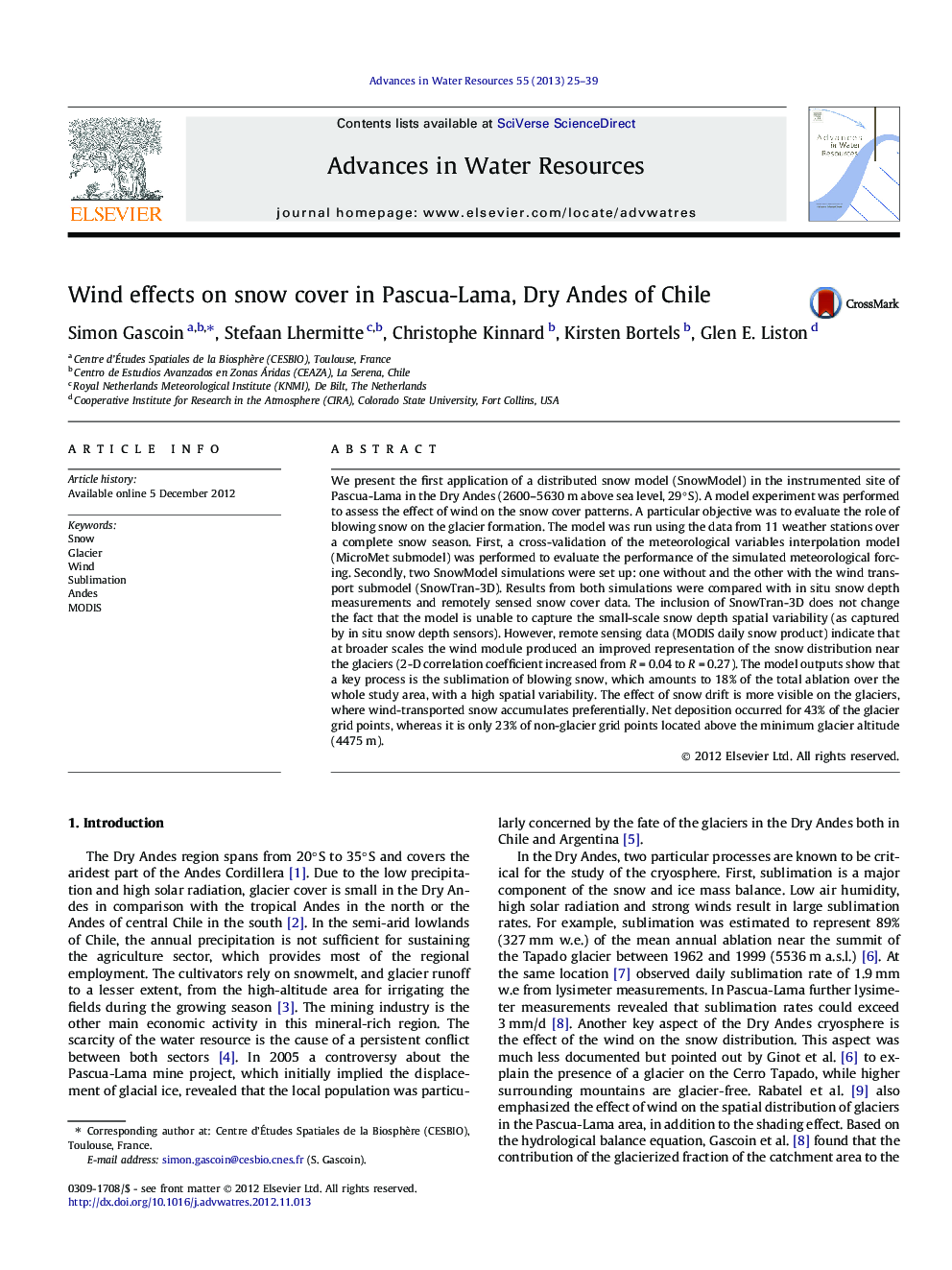| کد مقاله | کد نشریه | سال انتشار | مقاله انگلیسی | نسخه تمام متن |
|---|---|---|---|---|
| 4525648 | 1625653 | 2013 | 15 صفحه PDF | دانلود رایگان |

We present the first application of a distributed snow model (SnowModel) in the instrumented site of Pascua-Lama in the Dry Andes (2600–5630 m above sea level, 29° S). A model experiment was performed to assess the effect of wind on the snow cover patterns. A particular objective was to evaluate the role of blowing snow on the glacier formation. The model was run using the data from 11 weather stations over a complete snow season. First, a cross-validation of the meteorological variables interpolation model (MicroMet submodel) was performed to evaluate the performance of the simulated meteorological forcing. Secondly, two SnowModel simulations were set up: one without and the other with the wind transport submodel (SnowTran-3D). Results from both simulations were compared with in situ snow depth measurements and remotely sensed snow cover data. The inclusion of SnowTran-3D does not change the fact that the model is unable to capture the small-scale snow depth spatial variability (as captured by in situ snow depth sensors). However, remote sensing data (MODIS daily snow product) indicate that at broader scales the wind module produced an improved representation of the snow distribution near the glaciers (2-D correlation coefficient increased from R = 0.04 to R = 0.27). The model outputs show that a key process is the sublimation of blowing snow, which amounts to 18% of the total ablation over the whole study area, with a high spatial variability. The effect of snow drift is more visible on the glaciers, where wind-transported snow accumulates preferentially. Net deposition occurred for 43% of the glacier grid points, whereas it is only 23% of non-glacier grid points located above the minimum glacier altitude (4475 m).
► We present the first application of a distributed snow model in semiarid Andes.
► We examine the effects of the wind transport on snow cover.
► Modeling of the wind transport improves the simulated snow patterns.
► Blowing snow sublimation is a key process (18% of the total ablation over the study area).
► Preferential deposition of wind-transported snow enhances the glacier accumulation.
Journal: Advances in Water Resources - Volume 55, May 2013, Pages 25–39